 Read the peer reviews for this article
Read the peer reviews for this article
My first article (pages 26-31) examined the current rather ad hoc approach to station development in Britain that has characterised the past 60 years… and still does. This article looks at more structured and planned approaches to realising the mutually supporting benefits of rail travel and station hubs - focusing on some overseas examples and then on the beginnings of a new policy in Britain on the back of powers devolved to the regions.
So many converging factors are driving the increased use of public transport in Britain that there is little doubt that railway stations will become even more important as focuses of development and urban planning. With an awareness that the only sustainable way to plan for the huge and continuing increases in urban populations is by densification comes an acceptance that the transport hierarchy must place road vehicles - and especially cars - at the bottom.
The fossil fuel-powered car is one of the world’s most grotesquely inefficient machines, both spatially and physically, using less than 1% of fuel consumed for its primary purpose of moving usually a single occupant from A to B. Population pressure and soaring land values are likely to combine to make the use of urban space for the parking of cars (as well as multi-lane roads) look untenable. London’s population is expected to reach ten million before 2030, and if only one in five people owned a car, it would require an area ten times the size of the City of London just to park them.
Greater understanding of the ill-effects of traffic pollution - and its cost to healthcare systems as well as the economy - has made it a burning issue in cities throughout the world. A February 2016 Royal College of Physicians report calculated that the cost of polluted air on the NHS, business and other costs in the UK came to more than £20 billion a year.
London’s new mayor, Sadiq Khan, is hoping to inject a new sense of urgency to reducing the capital’s pollution - if his call for greater powers, including road tax, is accepted by the Government (or it is forced to by the High Court action brought by ClientEarth). Khan’s plan is for a T-charge, a toxicity levy on the filthiest vehicles, as well as extending the Congestion Charge to the North and South Circular roads. Most ambitiously, he is also calling for a scrappage scheme for diesel vehicles, to accelerate improvements - the Government’s low-emission zone plans would only bring London’s air quality within legal limits by 2025.
“The big problem is that not only have the oldest diesel cars failed to live up to official environmental standards, so too have many more recent ones,” says RAC Foundation Director Steve Gooding.
The most recent Defra air quality plan includes Clean Air Zones (see Table 2, page 36) for five cities (Birmingham, Derby, Leeds, Nottingham and Southampton) where councils will impose charges on polluting vehicles, to discourage them from coming into city centres. The potential for technical fixes has been discredited, and even if they held promise, that would not help reduce congestion. Retailers in London’s West End have demanded that traffic be halved by 2020 - it is no coincidence that pedestrianisation increases retail turnover.
Progressive cities recognise that they must present a pleasant environment to attract companies and inward investment. High volumes of traffic make it impossible to create welcoming spaces, and studies of streets have shown that there is an inverse relationship between social interaction and traffic density.
As the Foresight Future of Cities report by the UK Government’s Office for Science summarises: “The quality of the physical environment plays an important role in mental well-being - among the significant factors are noise and light levels, building layouts and way finding, and access to nature. The design of everyday products, buildings, transport systems and information communications devices all contribute to levels of stress or contentedness; a sense of inadequacy or self-efficacy; and isolation or connection to others.”
All this determines the ‘liveability’ of a city, and the focus on good local, regional and national transport in the Foresight project’s research puts railway stations centre stage.
Regarding the legally binding targets agreed at the 2015 Paris conference on climate change, Sir Mark Walport, the Government’s Chief Scientific Advisor, says: “Cities will be key places where the energy policies that will be needed to achieve this ambition will succeed or fail. Transport within the city is evolving in ways that encourage walking and cycling and improve health - the increasing use of bike schemes in London, in particular, is an example of this. Technology will help improve public transportation, for example through the many apps which are simplifying our movements in cities. They tell us how to get from A to B and, importantly, what we might find when we get there.”
But as Brent Toderian, the former chief planner of Vancouver, says, ‘What’ is easy - ‘how’ is the hard part. So how have other countries done it?
EAST JAPAN RAILWAY
East Japan Railway (JRE) operates 4,634.3 miles (7,458.2km) of railway in the eastern part of Honshu, and is used by 6.218 billion passengers a year. This private railway company has taken property development far beyond any equivalent in Europe, behaving more like a pre-nationalisation British railway company when they owned hotels, restaurants, housing, shops and warehouses.
JRE has adopted a policy of commercial development that generates both revenue and passengers, by providing a wide range of retail, residential, health, lifestyle and cultural amenities around a transport hub. It regards its stations as the group’s biggest business resource, with the goal of maximising the synergies between railway operations and non-transport businesses.
Passenger numbers are one of the factors to determine levels of investment. Stations with a footfall of between 30,000 and 200,000 people a day have had their operational requirements partially reviewed, to determine if space could be released for commercial activities requiring minimal investment and short construction schedules.
Stations with over 200,000 passengers have had a full-scale review of the layout and existing facilities in order to create better or additional space, including construction of artificial ground for air-space development.
There is a wide variety of ownership arrangements, from 100% to shared ownership, including a percentage of a building or by floors - as is the case at JR Tokyu Meguro Building. Some of its residential developments are on a huge scale. A condominium tower beside Saitama-Shintoshin station (18 miles from Tokyo) has 31 storeys and 260 units with offices and restaurants in the lower storeys (see picture, page 38). Office buildings provide a steady, long-term income and JRE currently operates 280,000 square metres of leasable office space.
In the early 2000s it developed two brands of hotel - full-service Metropolitan Hotels (of which the flagship is the 815-room example in Tokyo), and Hotel Mets (smaller-scale urban hotels to the same standard but with fewer facilities). JRE broke new technical ground in 2004 with the opening of Hotel Dream Gate Maihama, offering 80 rooms aimed at families and tourist groups. Its construction underneath an elevated railway line was made possible by new construction techniques that not only overcame the obvious drawbacks of noise and vibration, but also incorporated a seismic isolation system.
JRE has other brands which were created in the last half of the 1990s - Familio (themed around sports and outside activities), and Folkloro (which seeks to emulate a French-style auberge, using produce from an adjacent vegetable garden). JRE currently has 45 hotels with 6,690 rooms.
JRE has also developed Dila, atré, ecute and S-PAL as brands for its shopping centres, each matched to the characteristics of its location. In 2002 JRE was operating 110 shopping centres, with tenants carefully chosen to provide a broad mix and reflect local demographics and needs (for example, childcare facilities at stations enhance the convenience of commuting by train). Today it operates 154 shopping centres, with more than two million square metres of floor space.
Space for some centres has been created by the relocation of lower-value activities to other sites. For example, a shopping centre was built at Hiratsuka station on land previously occupied by a warehouse, while the mall at Kawagoe was built on land freed up by building an elevated station. At Shinagawa a train depot was moved further out of the city and running lines realigned to release land for development.
Besides operating its own convenience stores, JRE also forms alliances with other companies with the aim of accelerating development and addressing customer needs outside JRE’s competence. JRE also operates sophisticated vending machines at its stations, stocked with top-selling lines from a variety of makers. By means of a 47-inch touch screen, it can determine the gender, age and other characteristics of the customer - these, as well as the time of day and the temperature, prompt the machine to switch menu displays.
It is worth noting that although Japan may lack large numbers of the sort of flagship historic stations valued by passengers in Britain for their character (such as St Pancras, King’s Cross and Newcastle), JRE adopts a sensitive approach where a historic structure survives. The Marunouchi (western) side of Tokyo station was completed in 1914, and was returned to its original state during a five-year renovation finished in 2012. The second to fourth floors of this Important Cultural Property of Japan have been turned into a 150-bedroomed, European-styled hotel, and the open square in front of it has been landscaped.
Train fare collection has been dovetailed with retailing through the Suica IC e-card, introduced in 2001. This reusable debit card can be recharged with cash or credit pre-payments, and enables users to board local trains with the touch of a scanner on automatic ticket gates at either end of the journey. It can also be used at Suica-compatible vending machines and at around 290,000 stores inside and outside stations.
Its use was gradually extended to other transport companies, but in 2013 a nationwide mutual service network was launched linking ten public transport IC cards. This means it can be used for most train and bus services (and some other modes of public transport) in almost every major city in Japan - at 4,400 stations and on 24,000 bus services. Over 50.7 million cards have been issued, and mobile phones can also host the card with a special microchip.
Interestingly, JRE is not focused solely on its urban areas. Rediscovering the Regions Project is a vital component of its strategy for breathing life into the local communities it serves. The main object is to increase traffic flows of people and goods by creating new markets for regional produce.
JRE also invigorates regions by encouraging local communities to participate in forums that generate new ideas, raising the profile of local products and developing tourism resources such as traditional culture and festivals.
Most tangibly, JRE uses its sales channels in the Tokyo metropolitan area to promote regional produce. Station concourses host Sanchoku-Ichi (farmers’ markets) in collaboration with local communities, and NOMONO shops feature locally grown and processed foods, celebrating the distinct food culture of different regions. It has also created new markets at stations, such as the A-Factory craft centre and market beside the waterfront at Aomori station. Most of Japan’s apples are grown in this prefecture, and the craft centre processes them into cider while the market sells local produce.
HONG KONG
MTR has become a familiar name in Britain, with its involvement in various franchise bids, its successful operation of London Overground, and for winning the contest to run Crossrail. In Hong Kong MTR earns as much from property as it does from transport, making it an ideal partner for Transport for London as the capital’s transport owner rediscovers its heritage by embracing property development.
The ten-line rail network runs without subsidy - not only because it carries 5.4 million passengers a day, but also because of the financial support of MTR’s retail and 48 commercial developments at its stations.
To give an idea of their scale, the four residential towers that form the Riverpark development at Che Kung Temple station have almost 1,000 flats. MTR has also moved into mainland China, where the Shenzhen Metro Longhua Line Property Development will feature 1,698 residential units and a shopping centre of about 10,000 square metres (see panel).
In Hong Kong, MTR has three categories of malls above, in or beside its stations, with the flagship ELEMENTS luxury mall at Kowloon, regional malls with some very British names (such as Telford Plaza in Kowloon East and Maritime Square above a station), and neighbourhood malls.
CLOSER TO HOME
Sweden’s capital Stockholm is following the Japanese and Hong Kong model. It has already handed over the metro network to MTR, which at the end of 2016 will also take charge of its commuter rail network. Part of its plans entail taking “co-responsibility for the building and property development in, around and above stations, the servicing or even the creation of communities inextricably linked into the transport network”, as The Times recorded.
The object is to use the revenue from property to reduce the need for government subsidy. The intention is to use an undeveloped station to build homes, shops and cafes above it as the model for subsequent developments.
“Our model is to let in new ideas and new eyes. You need to lose some control to gain innovation,” says Kristoffer Tamsons, chairman of the Stockholm Transport Authority.
Elsewhere in Sweden, Jernhusen AB owns and runs railway stations and other buildings. Wholly owned by the Swedish government, the company was formed in January 2001 when the national railway was broken up. It operates on a commercial basis, but is charged with various economic, social and environmental objectives such as modal shift and economic growth, for which it receives a small share of ticket revenue.
A trend in many continental countries is to re-examine how stations are used, the flow of passengers, the amenities people want, design features in the urban realm that they find pleasing, and the potential of big data to redesign station layouts. Behind all these studies is the intention of making stations central to the way urban spaces function and in people’s perceptions as they move around them.
BRITISH STATIONS
Devolving powers to the regions has encouraged proposals to emulate these role models, although plans are more about principles than detail at this stage. They go far beyond the Government’s policy of finding railway land for housing, with the long-term ownership of assets through leases of hopefully 99, 125 or 150 years allowing a very different approach to station management and development.
Discussions with Network Rail around lease structures reveal nothing particularly new - the mechanisms already exist for station transfer within franchising. What is new will be the strategic mind behind the process, thanks to devolution.
Mark Rose, stations policy lead at Transport for Greater Manchester, believes that there has been “a tendency in transport to manage what you can see at stations”.
He explains: “We put up new signs on the station and think ‘job done’, but a passenger can still ask ‘where am I?’ We need to create a more outward-looking and permeable environment for pedestrians and cyclists. There has been too much emphasis on big stations - we will start at smaller ones which can provide an important local role, otherwise you amplify differences between the two. Instead of just looking at the station, we can turn through 180 degrees and look into the community and see how we could incorporate education, health and welfare facilities into stations.
“We are absolutely focused on the customer in this, looking to understand and influence all points on the journey rather than just station to station. It will give us the chance to improve digital connectivity and information, expand the retail offer, improve integration and devise complementary offers. It is a great opportunity to partner with third parties to deliver facilities and adapt stations to a high standard, knowing that we can realise the benefits and such efficiencies as energy-saving measures.
“There are 97 stations in the TfGM area, and there is no magic bullet because they are so varied in terms of architecture, size and community, so we are keen to develop an individual plan for each with the common themes of comfort, inclusivity and a chance for the community to play a greater role. We want to make stations more relevant to schools and colleges besides their role as housing hubs, as outlined in Greater Manchester’s spatial plan (see map).”
This echoes the comments of Vancouver’s Brent Toderian at Bristol’s Festival of Ideas: that it is easier to increase densities in city centres - the real challenge is how well we do the suburbs, where the car too often remains the default choice.
Similar thinking is taking place in the West Midlands, for the 110 stations within the West Midlands Business Unit. Malcolm Holmes, programme director at West Midlands Rail, sees a realignment of incentives as key to achieving the desired outcomes.
“At the moment, a franchise simply has to hand back a station in the same state that they got it. We want to create quality gateways that support the changing needs of passengers and help generate prosperity.
“We want to encourage station adoption, and adapt stations for the multiplicity of uses that ACoRP has helped to champion - social enterprise cafe, skills centre, art gallery, training, startup units, and so on. The link between station adoption and passenger numbers is now becoming well recognised, and it improves security. Stations could house post offices or provide a parcel collection service, and much more besides.
“There is huge room for improvement. Take Dudley Port, the station is the closest rail connection to Dudley, a town with a population of over 80,000 people, and has nearly 500,000 users a year, despite the waiting room being like a mesh cage and tickets being sold from a crumbling portable building. It should be a great interchange, but the bus stops are across a busy road with little signage or information. There is scope for above-station developments at Five Ways, University (used by over a million passengers a year) and Perry Barr, which is in a cutting, so suitable for a raft across it and well located for student accommodation above.
“For developments like this, we need to help developers through a process that can seem intimidating, given the number of stakeholders often involved. We don’t have the wherewithal of realising a development on the scale of Five Ways. We are looking at doing a trial with a small group of stations with whatever model we choose before a full programme.”
ADVOCACY
Throughout the world, city planners and transport professionals broadly agree the direction that must be taken because urban areas share the same problems of pollution, congestion, noise, rising population, poor design, and declining resilience in the face of climate change. Many urban spaces are far from uplifting places.
We have known for decades that we cannot build our way out of congestion even if was desirable to do so, which is why self-driving cars are proving to be a distracting cul-de-sac. Yet still governments pour money into road schemes, and exacerbate the problems we face.
A trenchant, broadly based critique of our failure to use knowledge to transform the way we manage our cities was published in 1997. Cities for a Small Planet by architect (Lord) Richard Rogers remains as true today as 19 years ago, although the urgency is ever greater.
Addressing his own question of ‘how?’, Brent Toderian states that we need vision combined with great data and storytelling, and the ability to convey (using ample evidence and engaging anecdotes) how much better we can make places.
The railway industry, allied with those skilled at place making, has a golden opportunity to accelerate the re-orientation of our urban spaces.
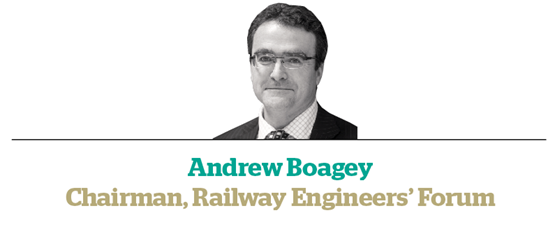 Anthony draws attention to some really important aspects of new rail station design and site redevelopment. He helps us to see what ‘good’ might look like, as well as reminding us that the traditional commercial development can, in fact, bring a repetition of our past mistakes.
Anthony draws attention to some really important aspects of new rail station design and site redevelopment. He helps us to see what ‘good’ might look like, as well as reminding us that the traditional commercial development can, in fact, bring a repetition of our past mistakes.
For me, the initial examples from the East Japan Railway read as cautionary tales, rather than blueprints for the future. We know that there are great commercial development opportunities in and around central rail stations. They can make or break a project business case. Hotels, office and retail developments can be transformative. But they can also scar a city for a generation. High-spec hotel and high-rise commercial developments alone do not bring any guarantee of success when the objective is creating a station with a sense of place. Thankfully, in the UK, we have Birmingham New Street and London King’s Cross to remind us how a standard should be set - defining new terms in the relationship between traveller, retailer and developer.
Let’s not forget that passenger (and rail media) pressure can (almost literally) pull superfluous retail out from the centre of our precious station concourses. When passenger numbers rocket, as we have seen in the past decade, a concourse serves as an important safety valve in times of train disruption.
It is about getting the balance right. And several ideas - such as encouraging suburban and regional markets, crafts and specialist retail to benefit from the natural connectivity of stations - strike a chord with our regional devolution agenda, as Britain’s newly empowered regional transport authorities find ways to break the investment deadlock that appears to surround so many stations on the network. Comments from Manchester and Birmingham illustrate that local planners are clearly flush with ideas and innovations, as well as looking forward to inward investment.
In fact, the opportunity to showcase local goods is a logical development. Even the more sophisticated motorway service centres, such as Westmorland, have learned the value of a transport centre as a regional shop window. Why not railway stations?
One can offer further international examples of stations that have gone right and wrong, proving that optimism alone does not pay. There are some notorious stops on the French high-speed network that have failed to act as catalysts for local development. The answer lies in getting the right local solution, and the right balance between transport and development opportunity. We need a scientific approach. We need tools to help us to monitor and understand this balance and to fight off the inevitable pressure towards a ‘do minimum’ planning option.
The article cites Vancouver’s Brent Toderian: “It is easier to increase densities in city centres - the real challenge is how well we do the suburbs, where the car too often remains the default choice.” Check out Mockingbird station in Dallas - this particular development used light rail and existing warehousing to create a mixed-use suburban regeneration, with new pedestrian links and improvements to the porosity of the site, which can often be a source of difficulty in rail projects where rail tracks divide communities, rather than bringing people together.
Getting the balance right is not easy. But at least station designers are no longer just talking about trains, or Brief Encounter.
 Like Anthony, I believe that railway stations can and should play an important role in urban planning and development. His article demonstrates that exciting things can happen on and around the railway network, and within it Mark Rose and Malcolm Holmes set out the aspirations their authorities have for their stations.
Like Anthony, I believe that railway stations can and should play an important role in urban planning and development. His article demonstrates that exciting things can happen on and around the railway network, and within it Mark Rose and Malcolm Holmes set out the aspirations their authorities have for their stations.
While I am a fan of devolution, I have to admit to some hesitation. More of my concerns later, but first let’s state the case for devolved control of stations. I would point to five key potential drivers of additional value from devolution:
- Local insight - has to be better than remote and number-driven approaches, which will always struggle to understand and respond to the human impact of stations.
- Local accountability - will provide for greater and more transparent accountability of decision-makers to their local communities.
- Integrated solutions - there should be the potential to develop, deliver and maintain more integrated solutions - particularly (but not limited to) urban mobility. Using station assets for other community uses (for example, post office, gym, health, education, worship) can support increased access to those services, offer a lower carbon cost and increase rail travellers.
- Local participation - the success of Community Rail Partnerships demonstrates the value of local participation. New businesses, improved stations, more rail travellers and greater community value from station assets have been generated through talented, dedicated and local participants.
- Long-term interest – something a franchisee with a fixed-term contract is hard placed to offer, and where Network Rail’s interests (at the franchised stations) are more about station asset management than the consequence or value of those assets. Local Government has a vested and long-term interest in the contribution of the stations to its broader policy agenda. Failing stations lead to consequences that they will otherwise have to deal with.
I will be very interested to see how the plans for stations in Greater Manchester and the West Midlands develop, and the case is made for local control. The starting point from which to build is the model of London Overground’s railway stations. Dramatic improvement in station environments and increased staff presence comes at a cost, but no one doubts that the London Overground stations (and the network itself) offer an established and successful part of TfL’s transport network. It is perhaps telling that the metro services offered by the national franchisees don’t have the same resonance of identity or clarity as part of an urban transport network.
So why my lingering sense of hesitation about station devolution? The concern relates to the potential consequences of a more fragmented approach to railway stations in what is an already complex and fragmented industry. I pose these personal hesitations as questions since they are risks that may or may not emerge, and their impact when they do is also uncertain and may be overwhelmed by other benefits gained.
With each local controller of stations seeking to stamp their mark on the station estate, will we see a myriad of branding, wayfinding approaches and ticket retailing and revenue protection strategies? Will the national network’s coherence diminish and damage passenger familiarity and confidence to travel?
At a local level devolution may provide clarity over responsibilities, but it is likely to add an additional participant to the contractual matrix. The devolved model will be yet another variant of station leasing if the five or six variants we have now are not enough.
Central Government has been keen to push greater powers to a local level, and not just in transport. What it is less keen on is devolving financial resources on a sustained basis for these new responsibilities. Station enhancements and maintenance will have to compete against other local priorities.
Ultimately there will be stronger and weaker participants in a new devolved world. Some authorities/mayors will relish their new authority and create new approaches and sources of funding. However, there will be some who are disinterested, disorganised or just in disarray. We might find a rump of stations (the unloved remainder) that lead to parts of the network becoming less utilised.
Station devolution has the potential to create real and material benefits at a local level. But, all parties should go into the devolution drive with their eyes wide open to both the future possibilities locally and the potential consequences nationally.

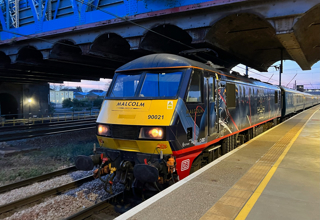
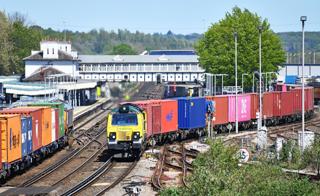
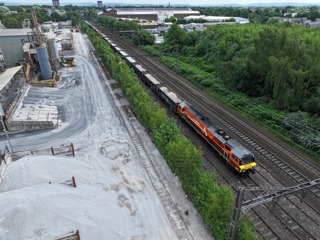
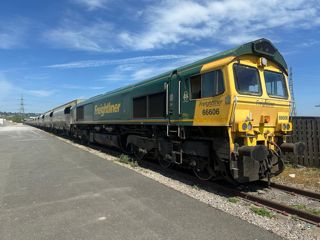











Login to comment
Comments
No comments have been made yet.